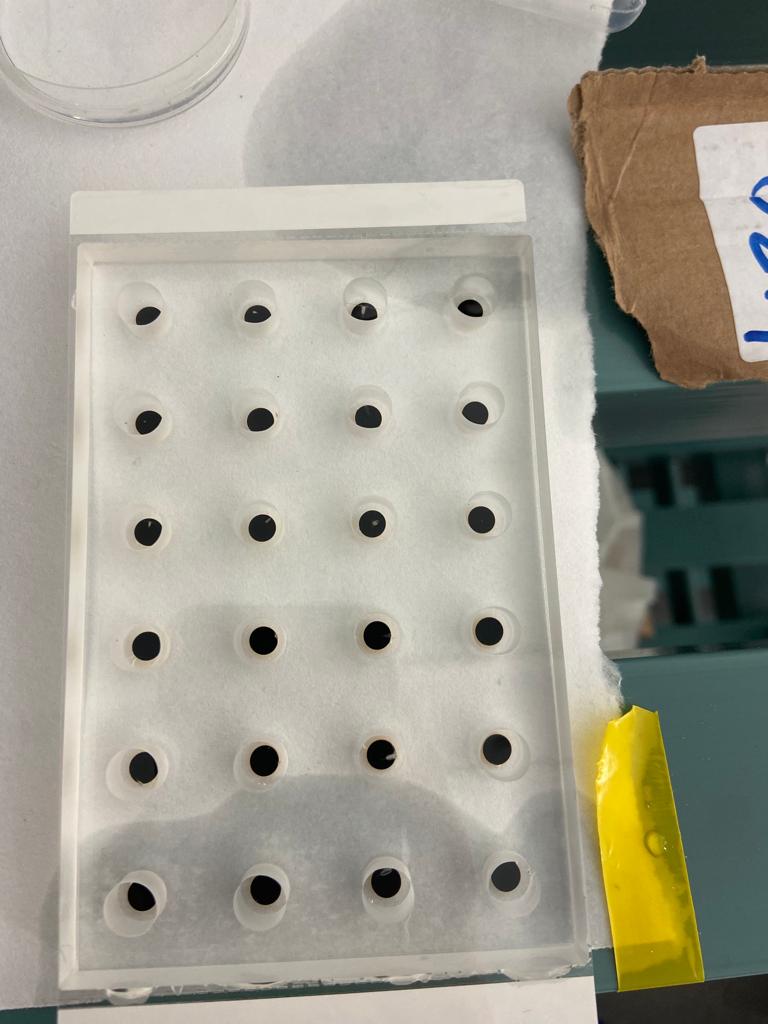Author and Pictures: María Couret Huertas
If you want to know what is happening in “La habitación fria” (the cold room), get the jacket and let me give you a tour.

In “La habitación fria” multiple experiments are taking place, but in this post I’m going to talk about the copepod respiration rate experiments. Copepods are small aquatic crustaceans and are one of the most numerous groups in aquatic plankton communities. The objective of the experiments is to verify if ocean alkalinity enhancement affects the physiology of the organisms.
For that, we place copepods, sampled from the mesocosms, in small respiration chambers. The chambers contain oxygen sensors that measure every few seconds and thus we can obtain the respiration rates of the organisms. It seems simple, right? But not everything is what it seems, these chambers have a volume of 500 µl (visual measurement: 4 drops), and there cannot be any bubbles inside the chambers, otherwise the oxygen measurement is not correct. So, you have to put about two drops of the treatment water, remove the tiny small bubbles with a needle and place the copepods. Trust me when I tell you they swim fast. Once the organisms are inside the chambers, they have to be covered with a plastic lid, preventing the formation of bubbles and avoiding damaging the organisms.

After 10 hours of experiments at 8 degrees, when you no longer notice the cold, you start thinking that jumping into the fjord is not such a bad idea. At the end of the experiment day, I like to change the room name to “La habitación fría del dolor” (the cold room of pain). However, and despite these small inconveniences, in “La habitación fria” I re-discovered the passion for field work that I had forgotten due to the Covid pandemic.
If you want to know about the other experiments carried out in “La habitación fria”, stay tuned!

